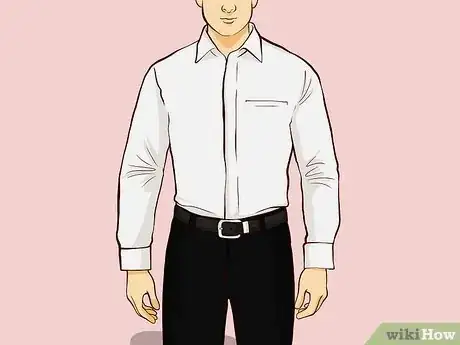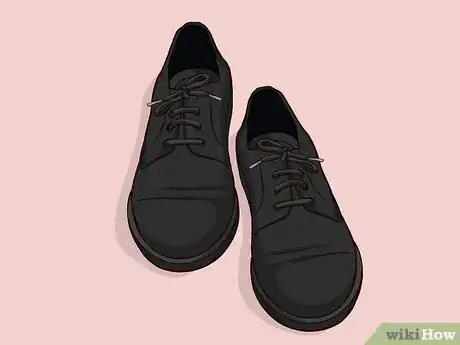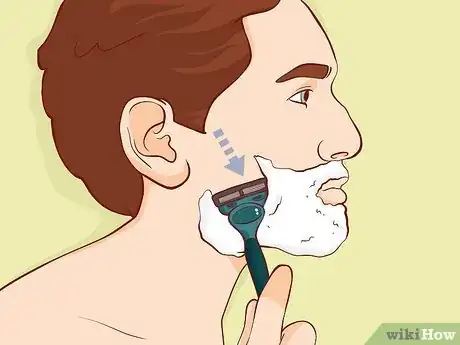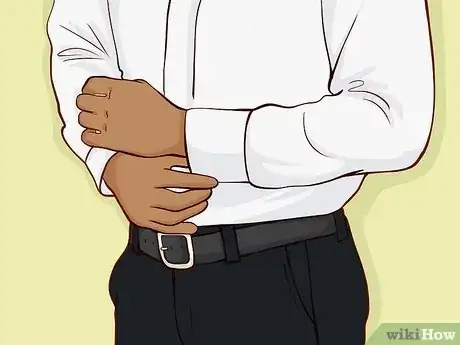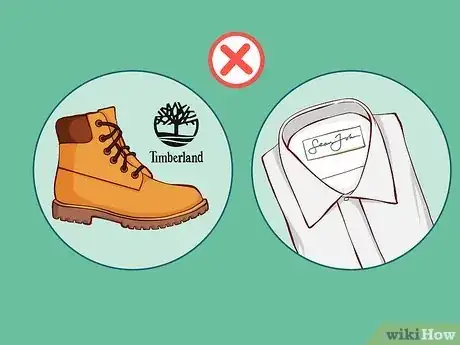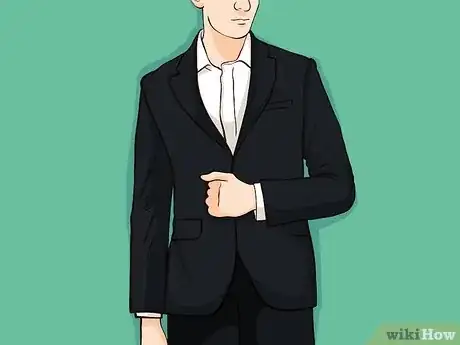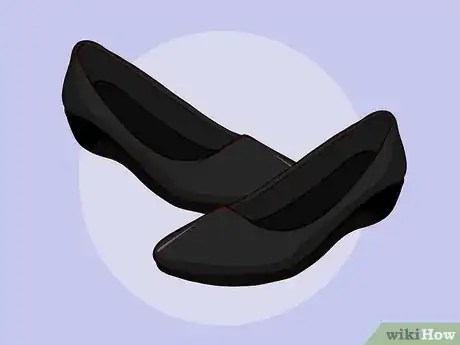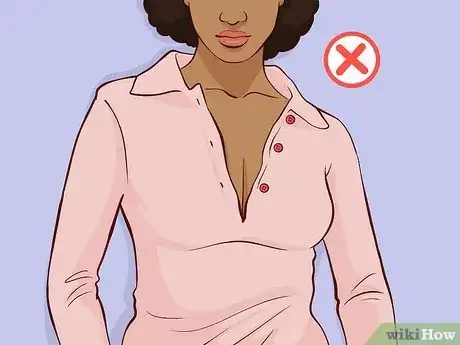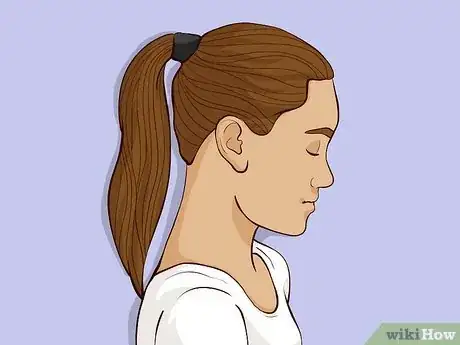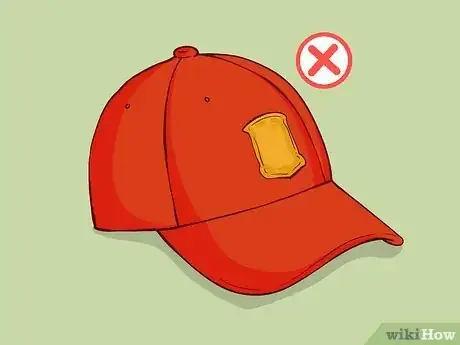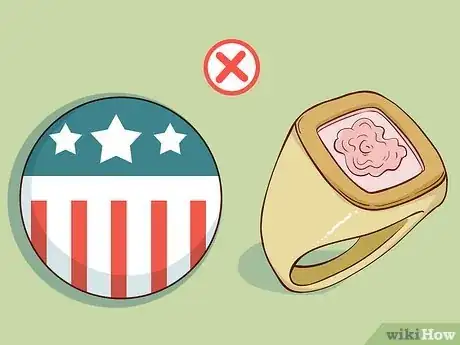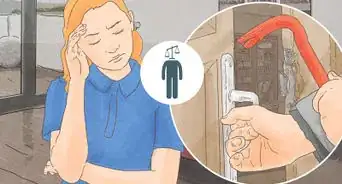This article was co-authored by Clinton M. Sandvick, JD, PhD. Clinton M. Sandvick worked as a civil litigator in California for over 7 years. He received his JD from the University of Wisconsin-Madison in 1998 and his PhD in American History from the University of Oregon in 2013.
There are 8 references cited in this article, which can be found at the bottom of the page.
This article has been viewed 171,975 times.
Whether you are representing yourself or have an attorney, you need to look as professional as possible when you go to court. Now is the time to put aside your shorts, torn jeans, and see-through shirts. Instead, you need to imagine that you are going to church or to a job interview for an office position.[1] Judges expect a conservative style of dress, and they may judge you negatively if you depart from their expectations.
Steps
Dressing Properly for Men
-
1Wear long pants and a shirt. If your pants have loopholes for a belt, then wear a leather belt. Make sure to tuck your shirt in, as you want to look neat and tidy.[2]
- Your shirt should have a collar—not a T-shirt or tank top. Try to get a long-sleeve dress shirt that buttons up. If you don’t have a dress shirt, then you can wear a nice polo shirt, but make sure to wash it correctly so you look clean.
- You should wear a tie with your dress shirt. Aim for something neutral looking. A solid-colored or check-patterned tie is best. Avoid “fun” ties—ties that have Santa Claus, naked women, etc. If you have a sports coat to wear, then wear that as well.[3]
- Avoid baggy pants, shorts, pants that hang down below your hips, and torn jeans.[4]
-
2Find appropriate shoes. Wear dress shoes if you have them instead of sneakers. Always wear socks with your shoes. Make sure that your socks match the color of your pants or shoes. Try to avoid flashy colors, like red.
- Do not wear flip flops or sandals under any circumstances.[5]
- If you don’t have dress shoes, try to borrow a pair that fit from someone. Otherwise, wear black sneakers which, from a distance, look like shoes.
- If you live in Texas, you can get away with cowboy boots. People in other states shouldn’t try to, however.[6]
Advertisement -
3Trim facial hair. Comb your hair and trim back untidy beards or goatees. If you nick yourself while shaving, try to stop the bleeding before leaving for court. Don’t show up to court with pieces of tissue covering your face to stop the bleeding.
- Men should also aim for a conservative haircut. Wash out any dye if the dye is an unnatural color (for example, blue or green).[7]
- If, for religious reasons, you have long hair or a beard, then that will be okay. You do not have to shave or get your hair cut. Nevertheless, you should appear as tidy as possible. Should your religion prohibit trimming beards, then you need to be aware that a judge might find an untrimmed beard odd.
-
4Aim for comfort. Whatever you choose to wear, you should make sure that you feel comfortable, especially if you are scheduled to testify at court. Judges will notice when someone is uncomfortable. You don’t want them to mistakenly attribute your discomfort to you lying.
-
5Be careful with brand names. In some areas of the country, certain brand names are associated with gang activity. This is not the impression you want to make on a judge.
- For example, a judge might associate brands like Timbaland and Sean John with criminal activity. It is best not to wear these brands of clothing when you show up in court.[8]
-
6Discuss appropriate attire with your attorney. Wearing pants with a tucked-in shirt is generally sound advice, regardless of what type of court you appear in. However, your lawyer might recommend different clothes depending on the situation. You should talk to your attorney about what wardrobe would be appropriate given your situation.
- For example, if you are in criminal court, then you may want to wear a suit. The more that you look like an upstanding professional member of the community, the better.
- If you are being sued for alimony, you might want to show up to court wearing less professional clothes. Doing so can signal to the judge that you are hard-pressed for money and can’t afford to pay alimony to your ex-spouse.
Dressing Properly for Women
-
1Wear a skirt or slacks with a blouse. The skirt should not be too short. Ideally, it will fall at least two inches above the knee. Avoid mini-skirts or any skirt that is too tight.[9] Your pants should also be full-length pants, not capris.[10]
- Pair your skirt or slacks with a nice blouse or dress shirt. You may also wear a clean sweater.
- Instead of pants or a skirt, you might wear a dress. Make sure that the dress is not too revealing. No slits up the thigh. Make sure that the dress is not a shiny cocktail dress or anything provocative like that. If the dress shows off your arms or shoulders, you should pair it with a sweater or another shirt.[11]
-
2Choose nice shoes. Don’t wear flip-flops or anything similar. Avoid sneakers. Instead, wear a nice pair of shoes. The shoes do not need to have a heel.[12] If the shoes have a heel, make sure it is not too long.
-
3Check for fit. You want your clothes to fit you properly but not be too revealing. Depending on your wardrobe, this could be difficult. As a general rule of thumb, if you wore something out to a club or on dates, then it might not be appropriate for a court hearing.
- You do not want anything too provocative. Do not wear low-cut shirts or super-tight clothes.[13] Watch out for plunging necklines on dresses. You’re not trying to date the judge.
- Imagine what your grandmother would say if she saw you in your outfit. If grandma would not approve, then neither will the judge.[14]
-
4Style your hair appropriately. Avoid “messy” looking hair. Instead, aim to keep your hair out of your face. You can wear your hair in a neatly brushed ponytail or put your hair in a bun.[15] Use clips and barrettes, if need be, to keep the hair out of your face.
- Needless to say, if you need to use barrettes or an elastic for a ponytail, make sure that they are conservative. Boring is best. No “Hello Kitty” or flashy rhinestone barrettes are needed.
-
5Keep makeup conservative. You do not need to wear makeup if you do not want to. Simply make sure to wash your face. If you choose to wear makeup, less is more.
- The same principle applies to nails. Try to avoid long acrylic nails or nails painted in flashy colors. You don’t want to give anyone a reason to think you are anything but a boring, upstanding member of society.[16]
Getting Rid of Accessories
-
1Avoid loud or large jewelry. Jewelry should not be flashy or make noises when you move.[17] For this reason, you should not wear a column of bracelets that jangle against each other as you move your arm. You should also remove loose change from your pockets. Anything that makes a loud noise as you walk should be removed.
- The less jewelry you wear, the better. Other than a watch and a wedding ring, you probably don’t need to wear any other piece of jewelry.
-
2Cover tattoos and piercings. Take out nose rings or any other studs that you had implanted on your face. Anything that you got because it was “edgy” or “different” will work against you in court. If you can’t remove earrings, try to cover your ears with your hair. You can use a piercing filler for any piercings.[18]
- Cover up tattoos with clothing. A long-sleeved shirt can cover arm tattoos, and long pants will cover leg tattoos. If you have a tattoo on your face or neck, then use makeup to conceal it.[19]
-
3Remove your hat. You should not wear a hat in the courtroom; it is considered disrespectful. If, for religious reasons, you wear a headscarf, turban, kippah or other headgear, then that should be fine. However, courts are undecided whether or not you can wear a full-face veil if you need to testify to the judge. You should consult with a lawyer if you wear a veil.
- Also remove sunglasses when you enter the courtroom unless there are medical reasons that you need to wear them. If you do need to wear dark glasses for medical reasons, try to bring a note from a doctor to that effect.
-
4Leave cell phones in your car. Do not bring into the courtroom anything that can beep or ring. Check your watch to make sure it does not make a noise at a certain time.
-
5Do not signal your political affiliation. Because you want to avoid giving the judge a reason for disliking you, then you should not wear anything that shows your political leanings or other affiliations. Avoid political buttons, college rings, and religious symbols if possible.
References
- ↑ http://www.mass.gov/courts/selfhelp/criminal-law/attire.html
- ↑ http://www.mass.gov/courts/selfhelp/criminal-law/attire.html
- ↑ http://www.mass.gov/courts/selfhelp/criminal-law/attire.html
- ↑ http://www.mass.gov/courts/selfhelp/criminal-law/attire.html
- ↑ http://www.mass.gov/courts/selfhelp/criminal-law/attire.html
- ↑ http://kielichlawfirm.com/how-should-i-dress-to-go-to-court/
- ↑ https://www.avvo.com/legal-guides/ugc/how-to-dress-for-your-first-court-appearance-with-your-attorney
- ↑ https://www.avvo.com/legal-guides/ugc/how-to-dress-for-your-first-court-appearance-with-your-attorney
- ↑ http://www.mass.gov/courts/selfhelp/criminal-law/attire.html
- ↑ http://kielichlawfirm.com/how-should-i-dress-to-go-to-court/
- ↑ http://kielichlawfirm.com/how-should-i-dress-to-go-to-court/
- ↑ http://kielichlawfirm.com/how-should-i-dress-to-go-to-court/
- ↑ http://kielichlawfirm.com/how-should-i-dress-to-go-to-court/
- ↑ http://kielichlawfirm.com/how-should-i-dress-to-go-to-court/
- ↑ https://www.avvo.com/legal-guides/ugc/how-to-dress-for-your-first-court-appearance-with-your-attorney
- ↑ https://www.avvo.com/legal-guides/ugc/how-to-dress-for-your-first-court-appearance-with-your-attorney
- ↑ http://kielichlawfirm.com/how-should-i-dress-to-go-to-court/
- ↑ http://kielichlawfirm.com/how-should-i-dress-to-go-to-court/
- ↑ http://kielichlawfirm.com/how-should-i-dress-to-go-to-court/
- ↑ http://www.mass.gov/courts/selfhelp/criminal-law/attire.html
About This Article
To dress for a court hearing, wear something professional, like slacks, a dress shirt, and dress shoes. Or, wear a blouse or dress shirt paired with a knee-length skirt. If you choose to wear jewelry, wear subtle, tasteful items so you don't draw too much attention to them. You should also remove any facial piercings, like nose rings or eyebrow studs, to maintain a professional look. Keep your hair clean and tidy, just like you would for a job interview. If you have long hair, tie it back in a pony tail or bun. For more tips from our Legal co-author, including how to do your makeup for a court hearing, read on!
